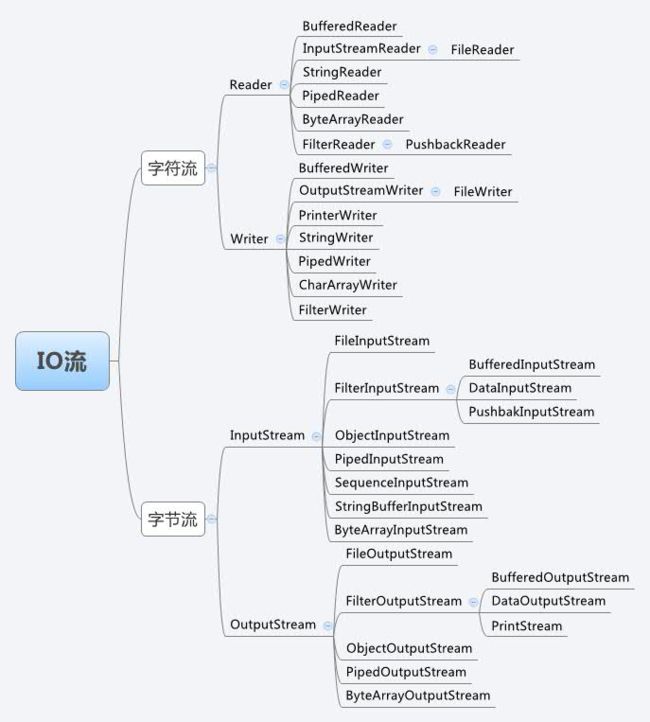- javaweb中@Component和@Mapper和@Service和@RestController这几个注解要加在哪?为什么?
瑞金彭于晏
mavenjavaspringbootspring
在JavaWeb开发中特别是在使用Spring框架(包括SpringBoot)时,@Component、@Mapper、@Service、@RestController这些注解扮演着非常重要的角色,它们用于定义组件的类型,并帮助Spring框架进行自动装配和依赖注入。下面分别解释这些注解应该加在哪里以及为什么:1.@Component加在哪里:@Component可以加在任何类上,表示这个类是一个
- Java Stream 去重的多种方法
坎布里奇
javajavapython开发语言
在JavaStream中实现去重有多种方法,具体取决于需求和场景。以下是常见的几种方法及示例:1.使用distinct()方法适用于对象已正确实现equals()和hashCode(),基于对象整体去重并保留顺序:ListuniquePersons=persons.stream().distinct().collect(Collectors.toList());2.根据对象的属性去重方法一:使用C
- java数组
TwitCoder
java算法
目录一、数组概念二、数组的声明与初始化三、数组操作示例四、数组属性与注意事项五、内存结构分析六、常见操作七、二维数组八、稀疏数组一、数组概念数组是Java中用于存储相同类型数据的有序集合,具有以下特性:类型一致性:所有元素必须属于同一数据类型有序性:元素按顺序排列,通过索引访问长度固定:创建后无法改变容量二、数组的声明与初始化声明数组//推荐写法int[]numbers;初始化方式:动态初始化nu
- Java开发-面试题-0014-@Component, @Controller, @Repository,@Mapper,@Service有何区别
CodeZeng1998
面试题java开发语言springboot
更多内容欢迎关注我(持续更新中,欢迎Star✨)Github:CodeZeng1998/Java-Developer-Work-Note技术公众号:CodeZeng1998(纯纯技术文)生活公众号:好锅(Lifeismorethancode)其他平台:CodeZeng1998、好锅@Component,@Controller,@Repository,@Mapper,@Service有何区别:@Co
- PySpark安装及WordCount实现(基于Ubuntu)
uui1885478445
ubuntulinux运维
在Ubuntu上安装PySpark并实现WordCount,需要以下步骤:安装PySpark:安装Java:PySpark需要Java运行环境。你可以使用以下命令安装OpenJDK:sudoaptupdatesudoaptinstalldefault-jredefault-jdk安装Scala:PySpark还需要Scala,可以使用以下命令安装:sudoaptinstallscala安装Pyth
- JavaScript 全面教程:从基础到高级实践
幼儿园扛把子\
javascript开发语言ecmascript
JavaScript全面教程:从基础到高级实践目录JavaScript全面教程:从基础到高级实践2.JavaScript基础语法2.1变量与数据类型2.1.1变量声明2.1.2数据类型2.2条件语句与循环2.2.1条件语句2.2.2循环2.3函数2.3.1函数定义2.3.2参数默认值3.对象与数组3.1对象3.2数组4.高级特性与最佳实践4.1作用域与闭包4.1.1闭包示例4.2事件循环(Even
- VUE前端实现防抖节流 Lodash
2501_91133275
前端vue.jsjavascript
写在前面:兄弟们,我手里有个长期项目,考虑接私活的可以看看我GitHub!https://github.com/ccy-233/coder2retire方法一:采用Lodash工具库Lodash是一个一致性、[模块化]、高性能的JavaScript实用工具库。(1)采用终端导入Lodash库$npmi-gnpm$npmi--savelodash(2)应用示例:搜索框输入防抖在这个示例中,我们希望用
- 一篇文章带你学完Java所有的时间与日期类
MHP小喇叭
java开发语言
目录一、传统时间与日期类1.Date类构造方法获取日期和时间信息的方法设置日期和时间信息的方法2.Calendar类主要特点和功能常用方法1.获取当前日历对象2.获取日历中的某个信息3.获取日期对象4.获取时间毫秒值5.修改日历的某个信息6.为某个信息增加或者减少值3.SimpleDateFormat类主要用途构造函数模式字符串将日期格式化成日期与时间字符串将时间毫秒值格式化成字符串解析日期示例要
- IDEA Reformat Code 避免将多行参数或多行方法链调用合并成一行
阿湯哥
intellij-ideajavaide
在IntelliJIDEA中,如果你希望在进行代码格式化(ReformatCode)时,避免将多行参数或多行方法链调用合并成一行,可以通过以下步骤进行设置:1.打开设置在IntelliJIDEA中,点击File菜单,然后选择Settings(Windows/Linux)或Preferences(macOS)。2.进入代码格式化设置在设置窗口中,导航到Editor->CodeStyle->Java(
- CVE-2017-5645(使用 docker 搭建)
JM丫
网络安全
介绍:是一个与ApacheLog4j2相关的安全漏洞,属于远程代码执行,它可能允许攻击者通过构造恶意的日志信息在目标系统上执行任意代码Log4j2介绍Log4j2是Apache的一个日志记录工具,属于Java应用的日志框架,它是Log4j的升级版,性能更好,功能更多.它被广泛的适用于Java应用程序中,帮助开发者记录程序运行的时候的日子信息,是Java生态系统中最重要的一个日志框架之一漏洞编号:C
- 【前端入门】应该了解和知道的几个国内外前端开发资源网站
爱上大树的小猪
前端
与大家分享一下几个国内外前端开发资源网站国际资源MDNWebDocs(MozillaDeveloperNetwork)用途:MDN是Web技术领域最全面的文档库之一,涵盖了HTML、CSS、JavaScript以及浏览器API等。链接:https://developer.mozilla.orgW3Schools用途:适合初学者学习Web技术,提供从基础到进阶的教程,同时还有在线练习环境。链接:ht
- Python(1)Python全方位指南:定义、应用与零基础入门实战
一个天蝎座 白勺 程序猿
Python入门到精通python开发语言
背景:为什么Python成为开发者必备技能?Python自1991年发布以来,凭借“简单高效”的设计理念,成为全球增长最快的编程语言。根据TIOBE2023年榜单,Python稳居前三,其核心竞争力包括:开发效率高:代码量仅为Java的1/5,C++的1/10。跨领域通吃:从Web开发到AI训练,覆盖90%以上技术场景。企业级应用:YouTube用Python处理视频推荐,NAS
- IntelliJ IDEA 2023.3.1安装指南从下载到配置的完整教程(附资源下载)
心灵宝贝
intellij-ideajavaide
安装IntelliJIDEA2023.3.1非常简单,以下是详细的安装步骤,适用于Windows、macOS和Linux系统。1.下载IntelliJIDEAIntelliJIDEA下载链接:https://pan.quark.cn/s/3ad975664934选择适合你的操作系统的版本:Ultimate版:功能全面,支持所有开发语言和框架(需付费)。Community版:免费版,适合Java和K
- 计算机毕业设计springboot教务管理系统 0k1c1源码+系统+程序+lw文档+部署
呦呦网络
springbootjavamysql
计算机毕业设计springboot教务管理系统0k1c1源码+系统+程序+lw文档+部署计算机毕业设计springboot教务管理系统0k1c1源码+系统+程序+lw文档+部署本源码技术栈:项目架构:B/S架构开发语言:Java语言开发软件:ideaeclipse前端技术:Layui、HTML、CSS、JS、JQuery等技术后端技术:JAVA运行环境:Win10、JDK1.8数据库:MySQL5
- c++与c语言的区别是什么?
pythoncainiao221
c++c语言开发语言
1、类型不同C语言是面向过程的,而C++是面向对象的。2、函数库不同C语言的标准的函数库很松散,而C++对于大多数的函数都是集成的很紧密。3、结构不同C语言中结构只有成员变量,而在C++中结构中,可以有成员变量和成员函数。它们的区别是c++是在C语言基础上发展起来的,根据开发过程中遇到的需求,它引入了很多新的特性。如果你不走C/C++方向,直接学习Java就可以了,相同的待遇下,选择简单的更好。当
- JAVASE(七)关键字this和static,类的结构详解(二)
永无魇足
javajava
目录一、关键字this和static1.关键字this2.关键字static二、代码块1.定义2.实例代码块和静态代码块一、关键字this和static1.关键字thisthis代表当前对象。(1)当方法里面的局部变量和成员变量同名的时候,就可以使用this。如:publicclassHuman{Stringname;Stringgender;publicHuman(Stringname,Stri
- JetBrains IntelliJ IDEA 2024 for Mac v2024.3 中文 Java开发工具
Olive_Sweet
javaintellij-ideamacos
介绍JetBrainsIntelliJIDEA2024mac,是一款Java开发工具,IntelliJIDEA凭借无与伦比的Java和Kotlin支持脱颖而出。从一开始就支持尖IDEA2024.3中文版开发工具端语言功能,保持领先地位。IntelliJIDEA对您的代码了如指掌,利用这些知识在每个上下文中提供相关建议,实现极快的导航和智能体验。效果下载百度网盘:https://pan.baidu.
- 02、数据结构与算法 - 基础:数组 - 吊打面试官
星星学霸
数据结构与算法-吊打面试官python开发语言java算法数据结构
更多系列教程,每天更新更多教程关注:xxxueba.com星星学霸本篇博客我们介绍数据结构的鼻祖------数组,可以说数组几乎能表示一切的数据结构,在每一门编程语言中,数组都是重要的数据结构,当然每种语言对数组的实现和处理也不相同,但是本质是都是用来存放数据的的结构,这里我们以Java语言为例,来详细介绍Java语言中数组的用法。Java中数组的介绍在Java中,数组是用来存放同一种数据类型的集
- Android wifi的开关Settings值异常分析
峥嵘life
androidAndroid系统Android网络androidpython开发语言
Androidwifi的开关Settings值异常分析文章目录Androidwifi的开关Settings值异常分析一、前言二、异常分析1、adb或者串口获取Settings的wifi开关值2、代码获取wifi开关值3、根据日志分析代码(1)logcat对应的wifi开启日志的代码①WifiServiceImpl.java②WifiSettingsStore.java3、wifi_on不同的具体原
- 如何减少跨团队交付摩擦?——基于 DevOps 与敏捷的最佳实践
网罗开发
实战实战源码devops运维
网罗开发(小红书、快手、视频号同名) 大家好,我是展菲,目前在上市企业从事人工智能项目研发管理工作,平时热衷于分享各种编程领域的软硬技能知识以及前沿技术,包括iOS、前端、HarmonyOS、Java、Python等方向。在移动端开发、鸿蒙开发、物联网、嵌入式、云原生、开源等领域有深厚造诣。图书作者:《ESP32-C3物联网工程开发实战》图书作者:《SwiftUI入门,进阶与实战》超级个体:CO
- Android开源库——RxJava和RxAndroid
松仔log
#Android开源库android开源rxjava
RxJava和RxAndroid是什么?RxJava是基于JVM的响应式扩展,用于编写异步代码RxAndroid是关于Android的RxJava绑定RxJava和RxAndroid使用依赖implementation'io.reactivex.rxjava3:rxjava:3.1.0'implementation'io.reactivex.rxjava3:rxandroid:3.0.2'使用过程
- java实现卷积神经网络CNN(附带源码)
Katie。
Java实战项目java
Java实现卷积神经网络(CNN)项目详解目录项目概述1.1项目背景与意义1.2什么是卷积神经网络(CNN)1.3卷积神经网络的应用场景相关知识与理论基础2.1神经网络与深度学习概述2.2卷积操作与卷积层原理2.3激活函数与池化层2.4全连接层与损失函数2.5前向传播、反向传播与梯度下降项目需求与分析3.1项目目标3.2功能需求分析3.3性能与扩展性要求3.4异常处理与鲁棒性考虑系统设计与实现思路
- kettle ETL 配置
云连山
数字化etl
pdi-ce-9.1.0.0-324配置-CSDN博客3、配置中文字符3.1)spoon支持中文字符,spoon.bat启动文件加-Dfile.encoding=utf-8REM%SPOON_START_OPTION%"%_PENTAHO_JAVA%"%JAVA_ADD_OPENS%%OPT%-jarlauncher\launcher.jar-lib..\%LIBSPATH%%_cmdline%%
- 深度解析前端面试八股文:核心知识点与高效应对策略
赵大仁
前端面试职场和发展
深度解析前端面试八股文:核心知识点与高效应对策略1.引言前端面试是每位开发者迈向职业进阶的重要环节,涉及HTML、CSS、JavaScript、性能优化、浏览器原理、网络、安全、框架(Vue/React)等核心知识点。本文不仅会覆盖前端面试的高频八股文,还会结合生动的案例,让你在面试时能够脱离死记硬背,从理解中突破!2.HTML&CSS高频考点2.1HTML语义化问题:什么是HTML语义化?为什么
- 字符流在处理不同编码文件时的工作原理
啊sen丶
java开发语言
在Java中,字符流是专门用于处理文本数据的IO流,它基于字符(char)操作,能够自动处理字符编码的转换。字符流的核心在于它可以根据指定的字符集(如UTF-8、GBK、ISO-8859-1等)将字节数据解码为字符数据,或者将字符数据编码为字节数据。这种机制使得字符流在处理不同编码的文件时非常灵活,能够有效避免因编码不一致导致的乱码问题。一、字符流的工作原理字符流在内部使用Charset(字符集)
- Java中的参数传递机制:值传递与引用传递的真相
啊sen丶
java开发语言
在Java编程中,参数传递机制是每个开发者都必须理解的基本概念之一。然而,关于Java的参数传递机制,常常存在一些误解。很多人会问:“Java是按值传递还是按引用传递?”本文将通过详细的解释和代码示例,帮助你彻底理解Java的参数传递机制。一、值传递与引用传递的基本概念(一)值传递(PassbyValue)值传递是指在调用方法时,将实际参数的值复制一份传递给方法。在方法内部对参数的修改不会影响到原
- AJAX PHP:深入理解与实际应用
wjs2024
开发语言
AJAXPHP:深入理解与实际应用引言随着互联网技术的不断发展,前端与后端交互变得更加频繁。AJAX(AsynchronousJavaScriptandXML)和PHP(HypertextPreprocessor)作为两种流行的技术,在实现动态网页和应用程序方面扮演着重要角色。本文将深入探讨AJAXPHP的工作原理、应用场景以及实际开发中的注意事项。AJAXPHP概述AJAXAJAX是一种基于Ja
- python代码重构技巧_Python代码重构指南,老师Bryan Beecham完结
weixin_39916479
python代码重构技巧
本套课程由BryanBeecham,全球知名敏捷开发教练主讲的:Python代码重构指南。重构是软件改进的核心,它使软件拥有更好的结构和性能,也使代码更易于理解、修改和扩展。尽管重构并不是新事物,但是软件开发人员仍然会苦恼于如何正确地进行重构。随着敏捷运动的发展,DevOps之类的概念不断追求高质量和精心设计的代码,以实现更快的部署和反馈。不过,现有的很多关于重构的教程都基于Java语言,关于Py
- Spring Boot 多级缓存实战:基于 Redis+Redisson 构建高并发解决方案
Isaac_Gao
缓存springbootredis
SpringBoot多级缓存实战:基于Redis+Redisson构建高并发解决方案本文适合人群:中高级Java开发工程师、系统架构师、对高并发场景优化感兴趣的技术人员一、为什么需要多级缓存?在百万级并发的电商系统中,我们曾遇到这样的性能瓶颈:本地缓存导致各节点数据不一致单纯依赖Redis造成带宽瓶颈缓存雪崩导致DB被打挂多级缓存架构通过结合本地缓存与分布式缓存的优势,实现了:热点数据纳秒级访问分
- Java代码优化提升系统性能
种豆走天下
java开发语言
优化可以涉及许多方面,例如算法优化、内存管理、线程管理、I/O性能等。以下是一些常见的优化建议和技巧:1.优化算法和数据结构选择合适的算法:优化性能的首要步骤是选择正确的算法。例如,使用二分查找代替线性查找,或者使用合适的排序算法来替代简单的冒泡排序。选择合适的数据结构:数据结构的选择对系统的性能有很大影响。例如,如果需要频繁的插入和删除操作,使用LinkedList而不是ArrayList可能会
- Nginx负载均衡
510888780
nginx应用服务器
Nginx负载均衡一些基础知识:
nginx 的 upstream目前支持 4 种方式的分配
1)、轮询(默认)
每个请求按时间顺序逐一分配到不同的后端服务器,如果后端服务器down掉,能自动剔除。
2)、weight
指定轮询几率,weight和访问比率成正比
- RedHat 6.4 安装 rabbitmq
bylijinnan
erlangrabbitmqredhat
在 linux 下安装软件就是折腾,首先是测试机不能上外网要找运维开通,开通后发现测试机的 yum 不能使用于是又要配置 yum 源,最后安装 rabbitmq 时也尝试了两种方法最后才安装成功
机器版本:
[root@redhat1 rabbitmq]# lsb_release
LSB Version: :base-4.0-amd64:base-4.0-noarch:core
- FilenameUtils工具类
eksliang
FilenameUtilscommon-io
转载请出自出处:http://eksliang.iteye.com/blog/2217081 一、概述
这是一个Java操作文件的常用库,是Apache对java的IO包的封装,这里面有两个非常核心的类FilenameUtils跟FileUtils,其中FilenameUtils是对文件名操作的封装;FileUtils是文件封装,开发中对文件的操作,几乎都可以在这个框架里面找到。 非常的好用。
- xml文件解析SAX
不懂事的小屁孩
xml
xml文件解析:xml文件解析有四种方式,
1.DOM生成和解析XML文档(SAX是基于事件流的解析)
2.SAX生成和解析XML文档(基于XML文档树结构的解析)
3.DOM4J生成和解析XML文档
4.JDOM生成和解析XML
本文章用第一种方法进行解析,使用android常用的DefaultHandler
import org.xml.sax.Attributes;
- 通过定时任务执行mysql的定期删除和新建分区,此处是按日分区
酷的飞上天空
mysql
使用python脚本作为命令脚本,linux的定时任务来每天定时执行
#!/usr/bin/python
# -*- coding: utf8 -*-
import pymysql
import datetime
import calendar
#要分区的表
table_name = 'my_table'
#连接数据库的信息
host,user,passwd,db =
- 如何搭建数据湖架构?听听专家的意见
蓝儿唯美
架构
Edo Interactive在几年前遇到一个大问题:公司使用交易数据来帮助零售商和餐馆进行个性化促销,但其数据仓库没有足够时间去处理所有的信用卡和借记卡交易数据
“我们要花费27小时来处理每日的数据量,”Edo主管基础设施和信息系统的高级副总裁Tim Garnto说道:“所以在2013年,我们放弃了现有的基于PostgreSQL的关系型数据库系统,使用了Hadoop集群作为公司的数
- spring学习——控制反转与依赖注入
a-john
spring
控制反转(Inversion of Control,英文缩写为IoC)是一个重要的面向对象编程的法则来削减计算机程序的耦合问题,也是轻量级的Spring框架的核心。 控制反转一般分为两种类型,依赖注入(Dependency Injection,简称DI)和依赖查找(Dependency Lookup)。依赖注入应用比较广泛。
- 用spool+unixshell生成文本文件的方法
aijuans
xshell
例如我们把scott.dept表生成文本文件的语句写成dept.sql,内容如下:
set pages 50000;
set lines 200;
set trims on;
set heading off;
spool /oracle_backup/log/test/dept.lst;
select deptno||','||dname||','||loc
- 1、基础--名词解析(OOA/OOD/OOP)
asia007
学习基础知识
OOA:Object-Oriented Analysis(面向对象分析方法)
是在一个系统的开发过程中进行了系统业务调查以后,按照面向对象的思想来分析问题。OOA与结构化分析有较大的区别。OOA所强调的是在系统调查资料的基础上,针对OO方法所需要的素材进行的归类分析和整理,而不是对管理业务现状和方法的分析。
OOA(面向对象的分析)模型由5个层次(主题层、对象类层、结构层、属性层和服务层)
- 浅谈java转成json编码格式技术
百合不是茶
json编码java转成json编码
json编码;是一个轻量级的数据存储和传输的语言
在java中需要引入json相关的包,引包方式在工程的lib下就可以了
JSON与JAVA数据的转换(JSON 即 JavaScript Object Natation,它是一种轻量级的数据交换格式,非
常适合于服务器与 JavaScript 之间的数据的交
- web.xml之Spring配置(基于Spring+Struts+Ibatis)
bijian1013
javaweb.xmlSSIspring配置
指定Spring配置文件位置
<context-param>
<param-name>contextConfigLocation</param-name>
<param-value>
/WEB-INF/spring-dao-bean.xml,/WEB-INF/spring-resources.xml,
/WEB-INF/
- Installing SonarQube(Fail to download libraries from server)
sunjing
InstallSonar
1. Download and unzip the SonarQube distribution
2. Starting the Web Server
The default port is "9000" and the context path is "/". These values can be changed in &l
- 【MongoDB学习笔记十一】Mongo副本集基本的增删查
bit1129
mongodb
一、创建复本集
假设mongod,mongo已经配置在系统路径变量上,启动三个命令行窗口,分别执行如下命令:
mongod --port 27017 --dbpath data1 --replSet rs0
mongod --port 27018 --dbpath data2 --replSet rs0
mongod --port 27019 -
- Anychart图表系列二之执行Flash和HTML5渲染
白糖_
Flash
今天介绍Anychart的Flash和HTML5渲染功能
HTML5
Anychart从6.0第一个版本起,已经逐渐开始支持各种图的HTML5渲染效果了,也就是说即使你没有安装Flash插件,只要浏览器支持HTML5,也能看到Anychart的图形(不过这些是需要做一些配置的)。
这里要提醒下大家,Anychart6.0版本对HTML5的支持还不算很成熟,目前还处于
- Laravel版本更新异常4.2.8-> 4.2.9 Declaration of ... CompilerEngine ... should be compa
bozch
laravel
昨天在为了把laravel升级到最新的版本,突然之间就出现了如下错误:
ErrorException thrown with message "Declaration of Illuminate\View\Engines\CompilerEngine::handleViewException() should be compatible with Illuminate\View\Eng
- 编程之美-NIM游戏分析-石头总数为奇数时如何保证先动手者必胜
bylijinnan
编程之美
import java.util.Arrays;
import java.util.Random;
public class Nim {
/**编程之美 NIM游戏分析
问题:
有N块石头和两个玩家A和B,玩家A先将石头随机分成若干堆,然后按照BABA...的顺序不断轮流取石头,
能将剩下的石头一次取光的玩家获胜,每次取石头时,每个玩家只能从若干堆石头中任选一堆,
- lunce创建索引及简单查询
chengxuyuancsdn
查询创建索引lunce
import java.io.File;
import java.io.IOException;
import org.apache.lucene.analysis.Analyzer;
import org.apache.lucene.analysis.standard.StandardAnalyzer;
import org.apache.lucene.document.Docume
- [IT与投资]坚持独立自主的研究核心技术
comsci
it
和别人合作开发某项产品....如果互相之间的技术水平不同,那么这种合作很难进行,一般都会成为强者控制弱者的方法和手段.....
所以弱者,在遇到技术难题的时候,最好不要一开始就去寻求强者的帮助,因为在我们这颗星球上,生物都有一种控制其
- flashback transaction闪回事务查询
daizj
oraclesql闪回事务
闪回事务查询有别于闪回查询的特点有以下3个:
(1)其正常工作不但需要利用撤销数据,还需要事先启用最小补充日志。
(2)返回的结果不是以前的“旧”数据,而是能够将当前数据修改为以前的样子的撤销SQL(Undo SQL)语句。
(3)集中地在名为flashback_transaction_query表上查询,而不是在各个表上通过“as of”或“vers
- Java I/O之FilenameFilter类列举出指定路径下某个扩展名的文件
游其是你
FilenameFilter
这是一个FilenameFilter类用法的例子,实现的列举出“c:\\folder“路径下所有以“.jpg”扩展名的文件。 1 2 3 4 5 6 7 8 9 10 11 12 13 14 15 16 17 18 19 20 21 22 23 24 25 26 27 28
- C语言学习五函数,函数的前置声明以及如何在软件开发中合理的设计函数来解决实际问题
dcj3sjt126com
c
# include <stdio.h>
int f(void) //括号中的void表示该函数不能接受数据,int表示返回的类型为int类型
{
return 10; //向主调函数返回10
}
void g(void) //函数名前面的void表示该函数没有返回值
{
//return 10; //error 与第8行行首的void相矛盾
}
in
- 今天在测试环境使用yum安装,遇到一个问题: Error: Cannot retrieve metalink for repository: epel. Pl
dcj3sjt126com
centos
今天在测试环境使用yum安装,遇到一个问题:
Error: Cannot retrieve metalink for repository: epel. Please verify its path and try again
处理很简单,修改文件“/etc/yum.repos.d/epel.repo”, 将baseurl的注释取消, mirrorlist注释掉。即可。
&n
- 单例模式
shuizhaosi888
单例模式
单例模式 懒汉式
public class RunMain {
/**
* 私有构造
*/
private RunMain() {
}
/**
* 内部类,用于占位,只有
*/
private static class SingletonRunMain {
priv
- Spring Security(09)——Filter
234390216
Spring Security
Filter
目录
1.1 Filter顺序
1.2 添加Filter到FilterChain
1.3 DelegatingFilterProxy
1.4 FilterChainProxy
1.5
- 公司项目NODEJS实践0.1
逐行分析JS源代码
mongodbnginxubuntunodejs
一、前言
前端如何独立用nodeJs实现一个简单的注册、登录功能,是不是只用nodejs+sql就可以了?其实是可以实现,但离实际应用还有距离,那要怎么做才是实际可用的。
网上有很多nod
- java.lang.Math
liuhaibo_ljf
javaMathlang
System.out.println(Math.PI);
System.out.println(Math.abs(1.2));
System.out.println(Math.abs(1.2));
System.out.println(Math.abs(1));
System.out.println(Math.abs(111111111));
System.out.println(Mat
- linux下时间同步
nonobaba
ntp
今天在linux下做hbase集群的时候,发现hmaster启动成功了,但是用hbase命令进入shell的时候报了一个错误 PleaseHoldException: Master is initializing,查看了日志,大致意思是说master和slave时间不同步,没办法,只好找一种手动同步一下,后来发现一共部署了10来台机器,手动同步偏差又比较大,所以还是从网上找现成的解决方
- ZooKeeper3.4.6的集群部署
roadrunners
zookeeper集群部署
ZooKeeper是Apache的一个开源项目,在分布式服务中应用比较广泛。它主要用来解决分布式应用中经常遇到的一些数据管理问题,如:统一命名服务、状态同步、集群管理、配置文件管理、同步锁、队列等。这里主要讲集群中ZooKeeper的部署。
1、准备工作
我们准备3台机器做ZooKeeper集群,分别在3台机器上创建ZooKeeper需要的目录。
数据存储目录
- Java高效读取大文件
tomcat_oracle
java
读取文件行的标准方式是在内存中读取,Guava 和Apache Commons IO都提供了如下所示快速读取文件行的方法: Files.readLines(new File(path), Charsets.UTF_8); FileUtils.readLines(new File(path)); 这种方法带来的问题是文件的所有行都被存放在内存中,当文件足够大时很快就会导致
- 微信支付api返回的xml转换为Map的方法
xu3508620
xmlmap微信api
举例如下:
<xml>
<return_code><![CDATA[SUCCESS]]></return_code>
<return_msg><![CDATA[OK]]></return_msg>
<appid><

